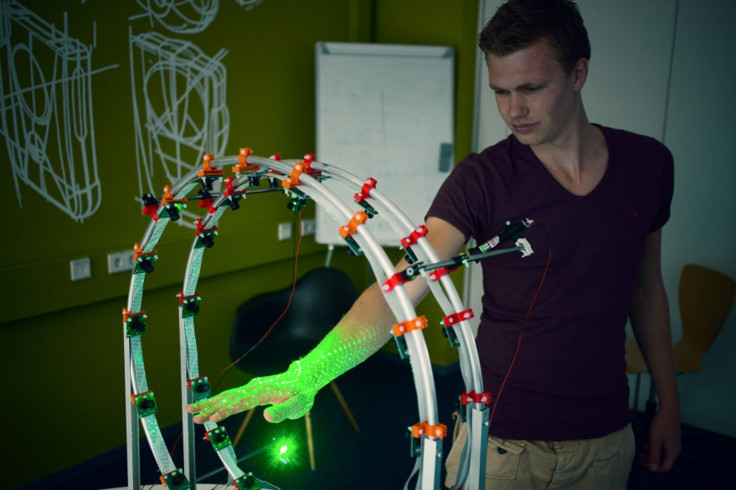3D Hand Scanner 'Curatio' Provides A Detailed Map Of Your Hand For Custom-Fitted Splints

Our hands are incredibly unique and complex. Each of them features 27 different bones, 14 of which make up our fingers. Injuring one or all of these bones often comes with the requirement that we wear a cast or splint to keep them in place while they heal. But sometimes, they don’t fit as well as they should. In comes the Curatio scanner, a 3D hand scanner that helps create custom-fitting medical instruments.
The Curatio was created by Pieter Smakman, a student in the Netherlands, as part of his graduation project. It’s capable of creating a detailed 3D map of anything placed between its 32 cameras, which are situated along the perimeter of a giant ring. Thirty-three credit card-sized mini computers process these images with the help of five laser pointers, which create reference points for the software to visualize the object in 3D. These images can then be shown to the patient in real time, or sent away for another doctor to give a second opinion. What’s more, the scans are so accurate that they can capture detail down to the millimeter on a patient’s hand — even rendering tendons underneath their skin.
One case in which Curatio was helpful involved a patient who had suffered a wrist fracture. This type of injury usually requires a patient to wear a heavy, cumbersome plaster cast, which is vulnerable to water as well as becoming loose once swelling goes down. Instead, the doctors used a customized version of Carpifix — a lightweight, breathable, and waterproof 3D-printed brace.
Curatio is only a school project, meaning its future use in the medical field is unknown. However, the detail with which it scans is a testament to the potential this kind of technology has not only in health care, but in other areas where custom-fits would be useful, such as glovemaking.



























